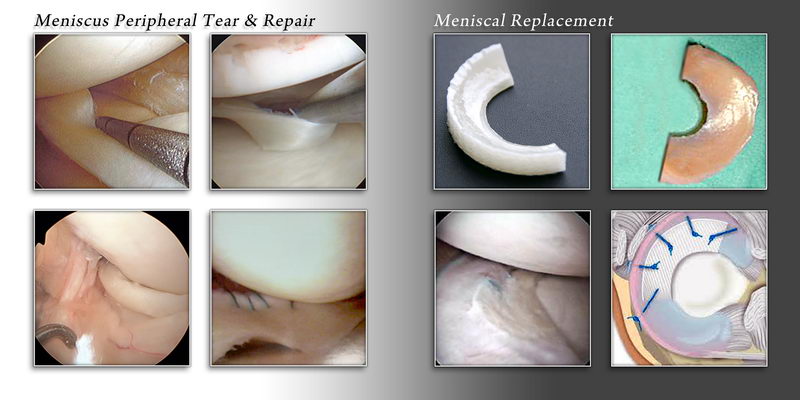Meniscal Lesions
The meniscus is a C shaped cartilaginous tissue with a wedge shaped profile that conforms to the articular surface of bones of the knee joint. There are two menisci in the knee joint. The one on the inside of the knee joint is called the medial meniscus and the one on the outer side is called the lateral meniscus.

The menisci serve as cushions inside the knee joint. They act as short absorbers and spread the load evenly within the knee joint and thereby preventing abnormal load on the articular cartilage. They also assist with the proper movement of the knee joint and provide stability by keeping the rounded femur surface from sliding off the flat tibial surface.
The blood supply to the meniscus comes from small blood vessels from the periphery of the meniscus. Most of the inner meniscal tissue does not have blood supply (avascular). When there is a tear or damage to the avascular portion of the meniscus, it does not heal.

The meniscal tear is a result of either traumatic injury (e.g. twisting injury while playing sports) or degenerative condition. With meniscal tear there is uneven load in the knee joint causing excessive pressure in certain areas of articular cartilage and can lead to early arthritis.
The commonest clinical presentation of meniscal tear is pain in the location of meniscal tear associated with swelling. Patients may complain of giving way, locking or clicking within the knee joint.
Treatment of meniscal tear depends on various factors. The treatment options are meniscectomy (removing the torn meniscus and trimming the remaining meniscus), meniscal repair and meniscal replacement with either implant (synthetic) or transplant (meniscal donor tissue).

